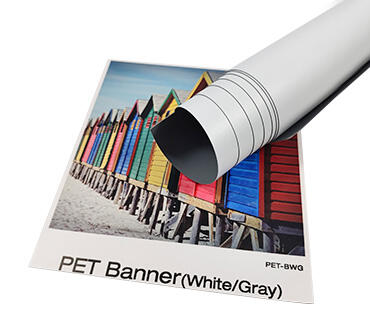Bubbles can ruin the appearance of your vinyl projects. Using proper techniques when applying self-adhesive vinyl glue ensures a flawless finish. A smooth surface not only looks professional but also lasts longer. By mastering the right methods, you can avoid common mistakes and achieve impressive results every time. Careful application makes all the difference in creating a polished and durable outcome.
Preparing the Surface
Proper surface preparation is the foundation of a successful application of self-adhesive vinyl glue. A clean and dry surface ensures better adhesion and reduces the risk of bubbles forming during the process. Taking the time to prepare the surface correctly will save you from frustration later.
Cleaning the Surface
Start by removing any dirt, dust, or grease from the surface. These contaminants can interfere with the adhesive and create air pockets. Use a soft cloth or sponge with a mild cleaning solution, such as dish soap mixed with water. Gently scrub the surface to eliminate all visible debris. Avoid harsh chemicals, as they may damage the material or leave residues that affect the glue's performance.
After cleaning, rinse the surface thoroughly with clean water. This step removes any soap residue that could prevent the vinyl from sticking properly. Use a lint-free cloth to wipe away excess moisture. Pay attention to edges and corners, as these areas often trap dirt.
Drying the Surface
A dry surface is essential for achieving a smooth finish. Moisture can weaken the adhesive and lead to bubbling. After cleaning, allow the surface to air dry completely. If you're in a hurry, use a clean, dry cloth to speed up the drying process. Ensure no water droplets remain, especially in crevices or uneven areas.
For best results, inspect the surface under good lighting. Look for any remaining moisture or streaks that could affect the application. A fully dry and clean surface provides the ideal base for applying self-adhesive vinyl glue.
Applying Self-Adhesive Vinyl Glue
Applying self-adhesive vinyl glue requires precision and patience. Following the correct steps ensures a smooth and bubble-free finish. This section will guide you through the process and introduce the tools you need for a successful application.
Step-by-Step Application Process
Position the Vinyl: Begin by aligning the vinyl with the surface. Hold it gently above the surface without letting the adhesive side touch. Take your time to ensure proper placement.
Peel Back the Liner Gradually: Slowly peel back a small section of the liner from the adhesive side. Avoid removing the entire liner at once. This helps you maintain control and reduces the risk of bubbles.
Apply the Vinyl in Sections: Press the exposed adhesive side onto the surface. Use your hands to smooth it down lightly. Work in small sections to ensure accuracy.
Use a Squeegee for Smoothing: Take a squeegee or a flat-edged tool and press firmly over the vinyl. Start from the center and move outward to push out any air pockets. Apply consistent pressure to ensure the vinyl adheres evenly.
Check for Bubbles: Inspect each section as you go. If you notice small bubbles, use a fine needle to puncture them. Gently press the air out through the hole.
Continue Until Fully Applied: Repeat the process until the entire vinyl is applied. Take your time to avoid rushing, as this can lead to mistakes.
Essential Tools for Application
Using the right tools makes the application process easier and more effective. Here are the essential items you should have:
Squeegee: A squeegee is crucial for smoothing the vinyl and removing air pockets. Choose one with a soft edge to avoid scratching the surface.
Fine Needle or Pin: This tool helps you eliminate small bubbles that may appear during application.
Lint-Free Cloth: Use this to clean and dry the surface before applying the vinyl. It ensures no debris interferes with the adhesive.
Cutting Tool: A sharp utility knife or scissors allows you to trim excess vinyl for a clean finish.
Measuring Tape: Accurate measurements help you position the vinyl correctly and avoid misalignment.
Having these tools on hand ensures a smoother application process. They also help you achieve a professional-looking result with minimal effort.
Techniques to Avoid Bubbles
Achieving a bubble-free finish with self-adhesive vinyl glue requires careful attention and the right approach. By following these techniques, you can ensure a smooth and professional result.
Working Slowly and Methodically
Rushing through the application process often leads to mistakes. Take your time and work in small sections. Begin by aligning the vinyl carefully before peeling back the liner. Press the adhesive side onto the surface gradually. This step-by-step approach allows you to maintain control and avoid trapping air beneath the vinyl.
Use consistent pressure as you smooth the vinyl onto the surface. Start from the center and move outward. This method pushes air pockets toward the edges, reducing the chance of bubbles forming. Inspect each section before moving on to the next. A slow and steady pace ensures precision and minimizes errors.
Using Proper Tools
The right tools make a significant difference in preventing bubbles. A squeegee is essential for smoothing the vinyl and removing air pockets. Choose one with a soft edge to avoid scratching the surface. Use firm, even strokes to press the vinyl into place.
A fine needle or pin is helpful for addressing small bubbles that may appear during application. Puncture the bubble gently and push the air out through the hole. This technique ensures the vinyl adheres properly without leaving imperfections.
Keep a lint-free cloth nearby to clean the surface as needed. Dust or debris can interfere with the adhesive and create air pockets. Having the proper tools on hand simplifies the process and improves the final result.
Inspecting for Bubbles During Application
Regular inspection during application helps you catch and fix bubbles early. After applying each section, check for any visible air pockets. Look closely under good lighting to spot imperfections. Addressing bubbles immediately prevents them from spreading or becoming more noticeable.
If you find a bubble, use the needle technique to release the trapped air. Smooth the area with a squeegee to ensure the vinyl adheres evenly. Consistent inspection throughout the process guarantees a flawless finish.
By working carefully, using the right tools, and inspecting your work, you can avoid bubbles and achieve a professional-looking result with self-adhesive vinyl glue.
Post-Application Tips
After applying self-adhesive vinyl glue, your work doesn’t end. Proper post-application care ensures the vinyl adheres securely and maintains its smooth, bubble-free finish. Following these tips will help you achieve long-lasting results.
Allowing Time to Set
Letting the vinyl set is crucial for strong adhesion. Avoid touching or moving the vinyl immediately after application. The adhesive needs time to bond fully with the surface. Place the project in a stable environment where it won’t be disturbed. Keep it away from excessive heat or moisture, as these can weaken the adhesive.
For best results, allow the vinyl to sit undisturbed for at least 24 hours. This waiting period ensures the glue sets properly and reduces the risk of bubbles forming later. Patience during this step leads to a more durable and professional-looking finish.
Inspecting for Imperfections
Once the vinyl has set, inspect the surface carefully. Look for any imperfections, such as small bubbles or uneven edges. Use good lighting to spot these issues. If you find a bubble, use a fine needle to puncture it gently. Press the air out through the hole using a squeegee or your fingers.
Check the edges of the vinyl to ensure they are secure. If you notice any lifting, press them down firmly. A thorough inspection helps you address minor flaws before they become bigger problems. This step ensures your project looks polished and professional.
Maintaining the Vinyl
Proper maintenance keeps your vinyl looking great over time. Clean the surface regularly to remove dust and dirt. Use a soft, damp cloth and avoid harsh chemicals that could damage the vinyl. Gentle cleaning preserves the adhesive and prevents peeling.
Protect the vinyl from extreme conditions. Avoid exposing it to direct sunlight for extended periods, as this can cause fading or warping. If the vinyl is on a high-traffic surface, consider applying a protective layer to reduce wear and tear.
Handle the vinyl with care to prevent scratches or damage. Regular maintenance not only extends the life of your project but also keeps it looking as good as new.
By following these post-application tips, you can ensure your self-adhesive vinyl glue project remains smooth, durable, and visually appealing.
Mastering the use of self-adhesive vinyl glue involves three essential steps: preparing the surface, applying the glue carefully, and following post-application care. By focusing on these steps, you can achieve a smooth, bubble-free finish that looks professional and lasts longer. Take your time during each stage and rely on the recommended tools to simplify the process. With patience and attention to detail, you can create flawless results for your vinyl projects. Remember, the effort you invest now will ensure a polished and durable outcome.

